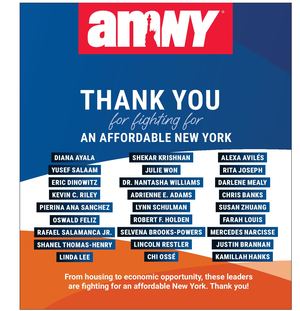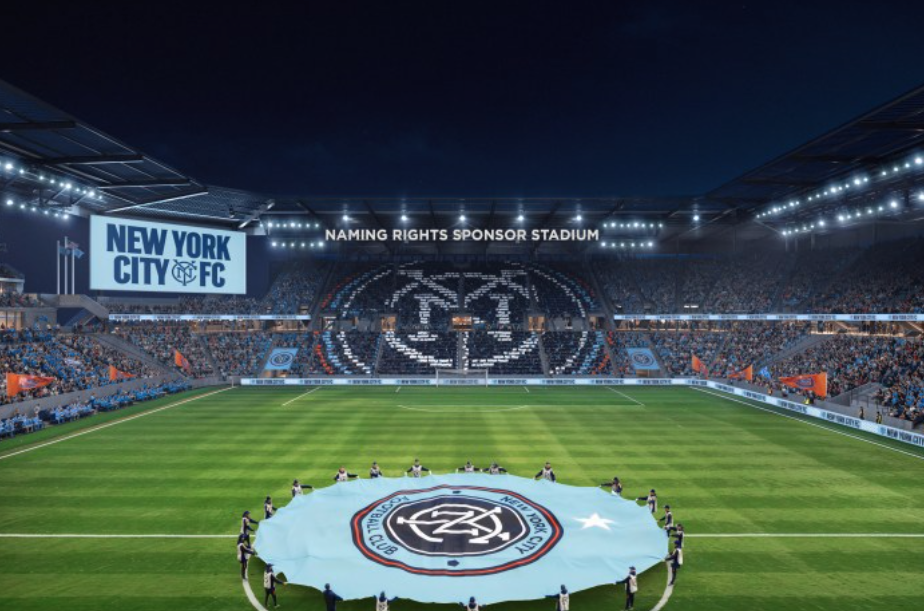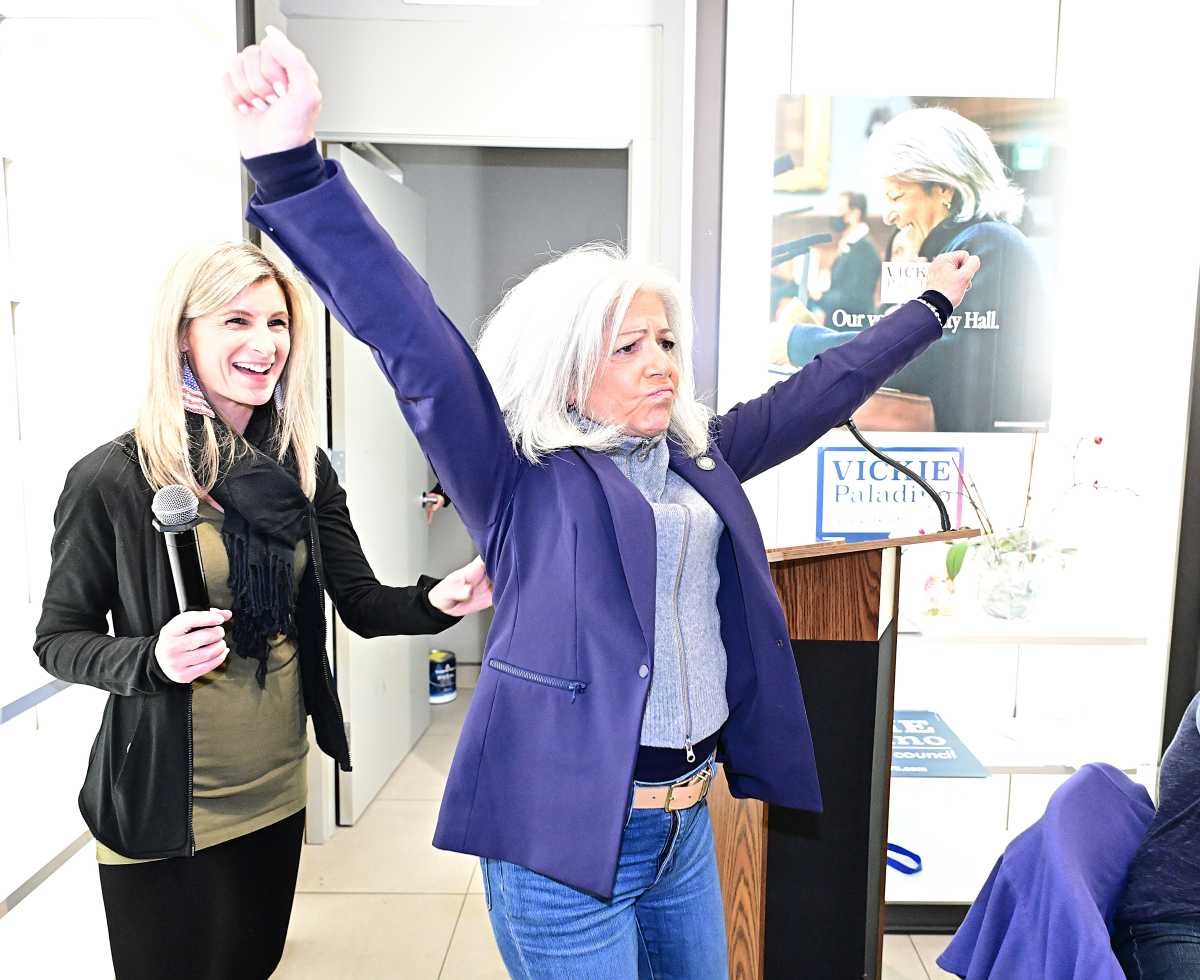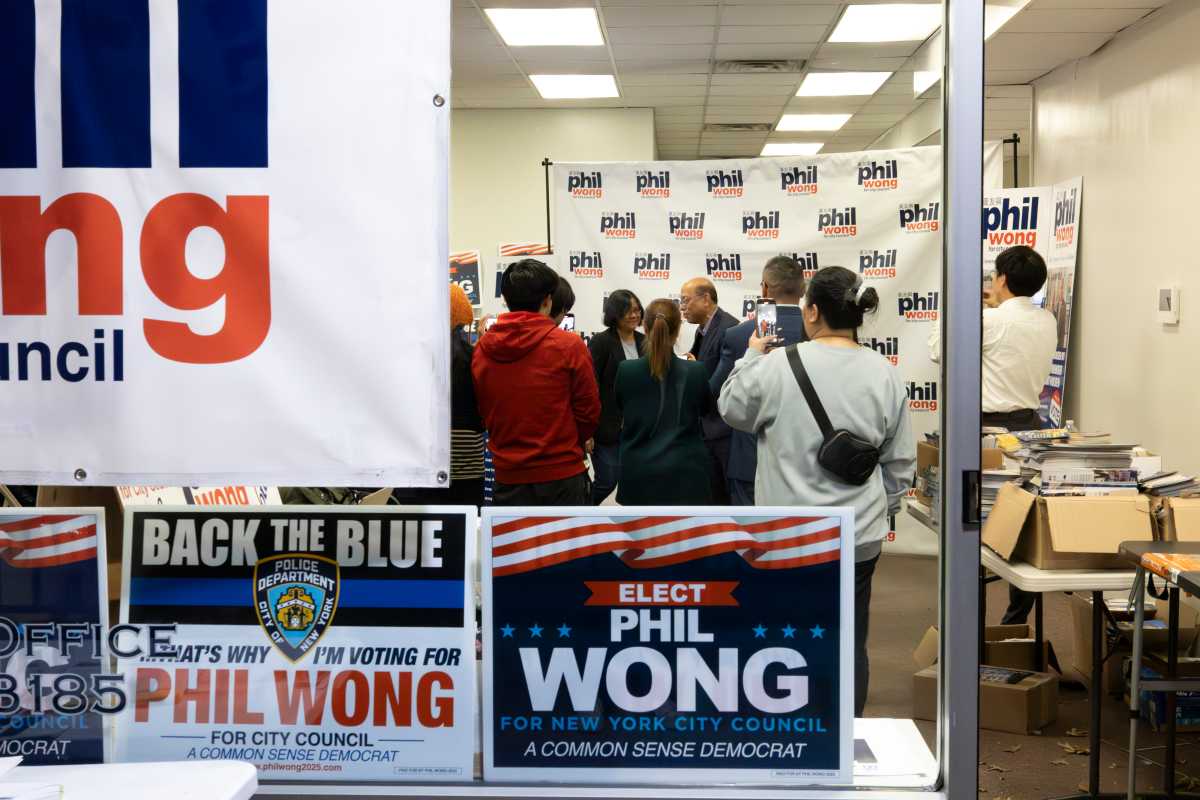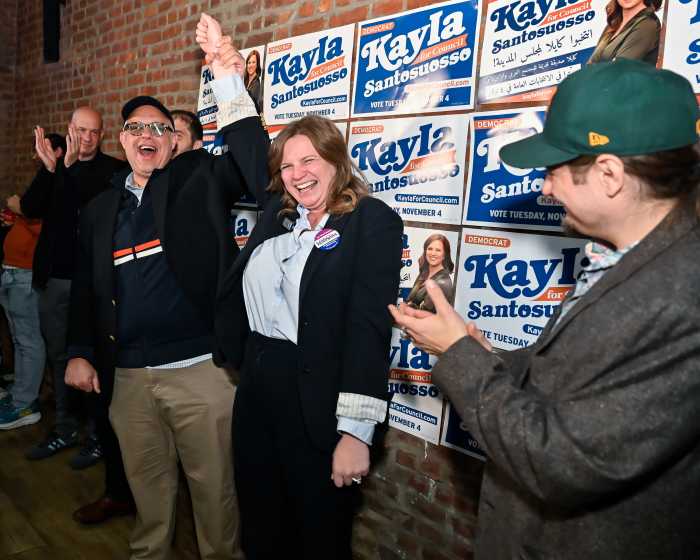The New York City Football Club (NYCFC) unveiled detailed plans for its new 25,000-seat, soccer-specific stadium, scheduled to open at Willets Point for the start of the 2027 Major League Soccer season.
The club released new details about the stadium on Tuesday at the launch of the new NYCFC Stadium Experience Center at 600 3rd Ave. in Manhattan. The center will be open by appointment to fans and sponsors, who will have the chance to receive a virtual experience of the stadium and buy premium seats ahead of its opening.
The fan experience features a bar area and will be used to host supporter’s events over the coming years, while it also includes a scale model of the planned stadium in addition to 3-D images and artist’s interpretations, providing fans with an opportunity to get a glimpse of views from inside the stadium.
Almost the entire west stand will be devoted to premium hospitality seating, making up roughly 20% of the total capacity. The premium seats will include an exclusive Tunnel Club, which will offer ticketholders access to pitch-side seating and 285 square-foot pitch-side suites. The Tunnel Club will also allow fans to dine in a lounge just yards from where players will enter the field.
The west stand will also feature two rows of suites situated above pitch level, including 23 “Broadway” suites and nine “Skyline” suites. Each suite will contain 12 outdoor seats and can accommodate 18 people.

The remainder of the west stand will be devoted to three premium sections, each with access to a different lounge. The club said all premium seating will come with complimentary food and drinks.
The north stand, meanwhile, will be devoted to the supporter’s section and will feature a mixture of seating and safe standing. The supporter’s section, located behind one of the goals, has already been informally called “The Wall,” while members of the supporter’s club will receive their own designated entrance and concourse for pregame festivities.
The main entrance for general admission will be located in the southwest corner of the stadium. It will take the form of a giant seven-story cube measuring 11,000 square feet. “The Cube” will boast a giant LED screen and has been designed to intimidate fans of opposition teams.
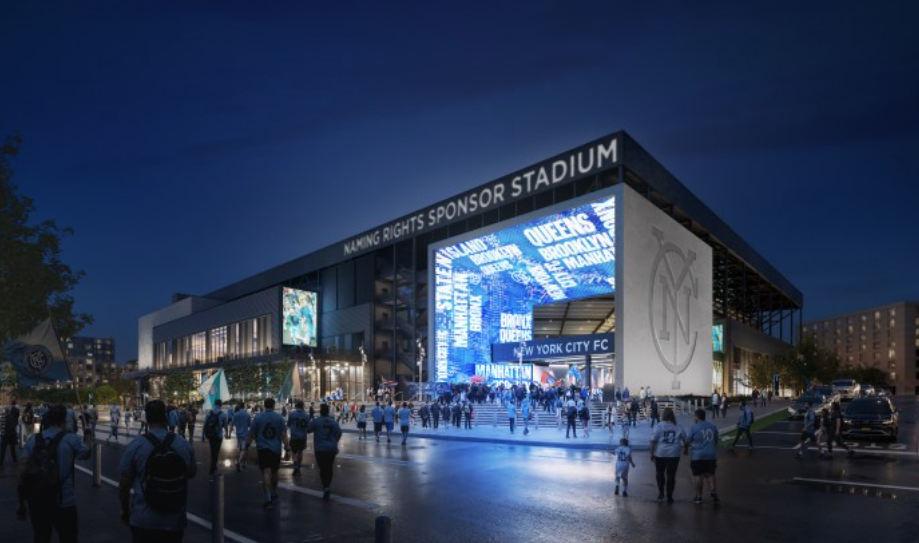
Brad Sims, CEO of NYCFC, said the stadium’s design is tailored to creating the best and most intimidating atmosphere possible.
“Our end zone seats have the steepest pitch allowable by MLS standards and by stadium safety standards,” Sims said. “So it’s almost like, you’re playing into a wall. Everyone’s on top of the action. Then the acoustics of the stadium – everything is meant to create an intimidating and loud atmosphere.”
In April, the New York City Council approved plans for NYCFC’s proposed 25,000-seat stadium, as well as a 2,500-unit affordable housing complex, a 650-seat elementary school, a 250-room hotel, retail space, and around 40,000 square feet of public open space. The stadium will also become the first fully electric sports venue in New York City and will generate its own power through solar panels on the stadium roof. The stadium, along with the adjacent community and residential development, is 100%t privately financed.
The club hopes to break ground on the stadium in the fall, while Queens Development Group, which is handling the residential and community developments, has already broken ground on residential units located south of the stadium.
At present, NYCFC splits its home games between Yankee Stadium and Citi Field depending on availability, with the Willets Point stadium set to become the first soccer-specific stadium in New York City.
NYCFC made its MLS debut in 2015 and aimed to build its own soccer-specific stadium within three years, committing to build a venue within the five boroughs.
However, chief operating officer Jennifer O’Sullivan said the development encountered a number of “fits and starts” over the past decade due to the challenges of building a sports venue in New York City.
“We made a promise over 10 years ago to build in the five boroughs of New York, and here we are now,” O’Sullivan said. “I think the reality of getting closer and closer to a groundbreaking has just built an excitement and a feeling among the people here that is palpable.”
O’Sullivan described the new stadium as a transformational project for both NYCFC and the local area in Willets Point, stating that the project will bring a new neighborhood to New York City for the first time in decades.
“It’s not just the stadium. It is a new neighborhood, and the first new neighborhood in New York in decades, in an area that’s been desolate and just ignored for decades.”
Jonathan Stemp, chief of infrastructure at NYCFC’s parent company, City Football Group, said the club considered several potential sites before settling on the Willets Point location and had made the right decision for “so many reasons.”
Stemp referenced access to public transport and highways as key factors in Willets Point, adding that the diversity of Queens makes Willets Point the perfect destination for the world’s game.
“When we talk about building and growing our fan base, I don’t think that there is a better place for us to be than the borough of Queens.”
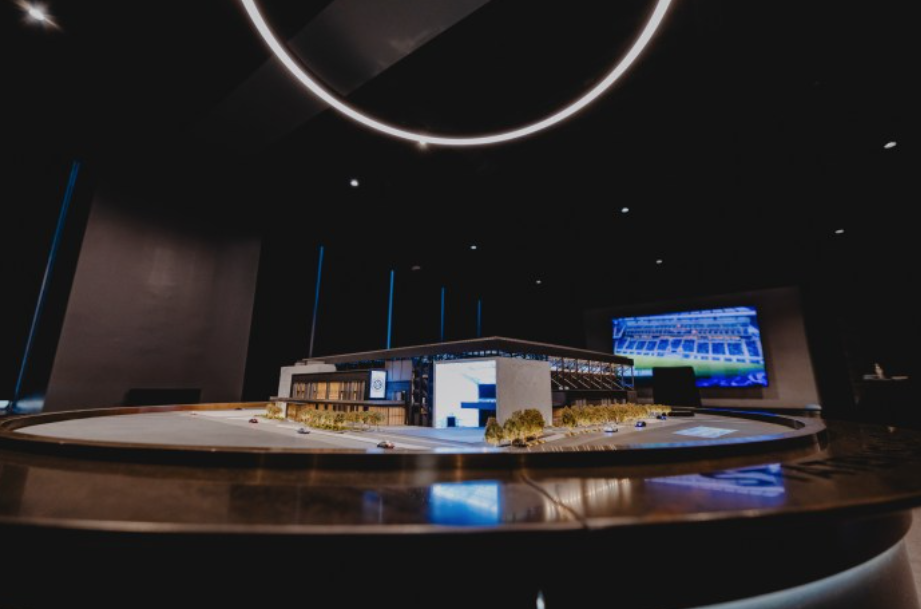
Maxi Moralez, who spent seven years at the club over two periods, said the new stadium will help grow the club’s connection with its fanbase. Fans will be closer to the action and attend a stadium built specifically for soccer.
He said the stadium’s location in Queens would help increase its already significant Latino fanbase while simultaneously capturing new fans from other nationalities.
“Having our stadium will definitely make a difference,” Moralez said. “A smaller, closer stadium will make a huge difference for players. They’ll feel it (the atmosphere) more.”
The stadium is due to open at Willets Point less than a year after New York/New Jersey hosts the 2026 FIFA World Cup final, and Sims, O’Sullivan, Stemp, and Moralez all agreed that the stadium is opening at the optimum time to capture any uptick in soccer interest fostered by the USA hosting the World Cup.
However, Stemp said he wants to think longer term and build a stadium that will last for generations after the World Cup is over.
“This investment is a 100-year investment,” Stemp said. “When we talk about the progression of soccer in the United States, it’s been going on for 150 years, so you have to think about it in that long-term context.
“In 2026, soccer is going to hit a peak like it did when the World Cup was in the US previously, and we’re going to benefit from that. But this is a long-term football investment project. It’s going be here for 100 years at minimum, and we’re just at the beginning of that.”
O’Sullivan, on the other hand, said events like the World Cup and Lionel Messi’s transfer to the MLS will help to grow soccer immensely in the US, giving NYCFC an opportunity to leverage further interest in the new stadium.
She said the stadium would be a venue for New Yorkers and acknowledged that many immigrant soccer fans in Queens and other parts of the city probably already support a team from back home.
“We’re not trying to replace that team. We’re just saying we can be your local team here in New York. You live here in New York now. Let us be your local team here that you follow.”
Sims, meanwhile, believes that the new stadium will help the club unlock its potential, stating that it is currently limited by the constraints of being a tenant in two different baseball grounds.
“From a commercial standpoint, partnerships are limited (at present). You don’t have a naming rights revenue. You don’t have entitlements, all the different clubs and entrances, and all the most significant pieces of inventory that have the potential to be monetized.”
He also referenced the 80:20 rule, whereby 80% of ticketing revenue is generated from 20 % of premium seats. However, premium seats in a baseball stadium are located behind home plate and at a significant distance from the field when NYCFC is playing in Yankee Stadium or Citi Field, making it difficult for the club to sell premium seats at present.
Sims said the club is aiming to choose a sponsor for the venue by the end of 2024.
